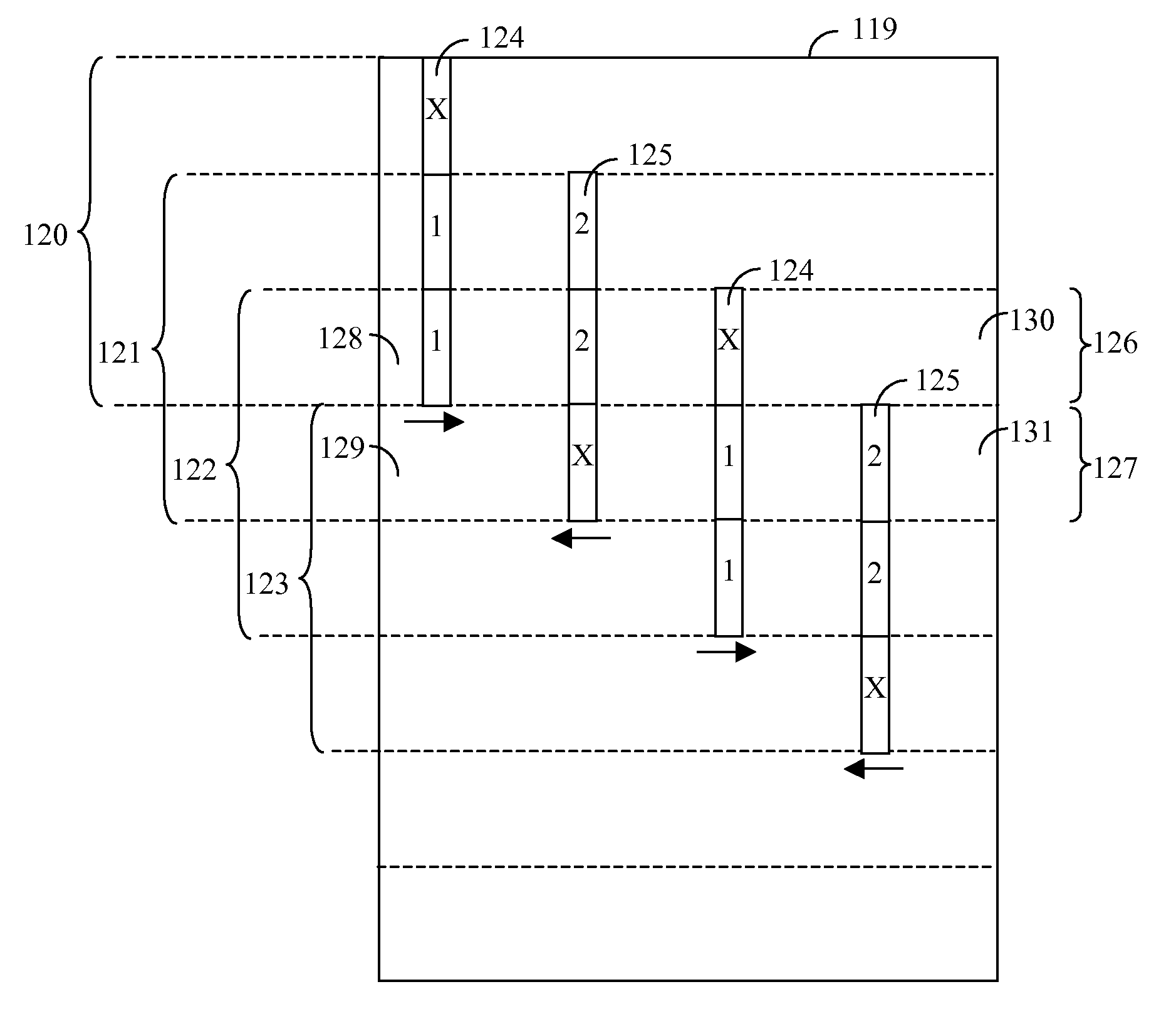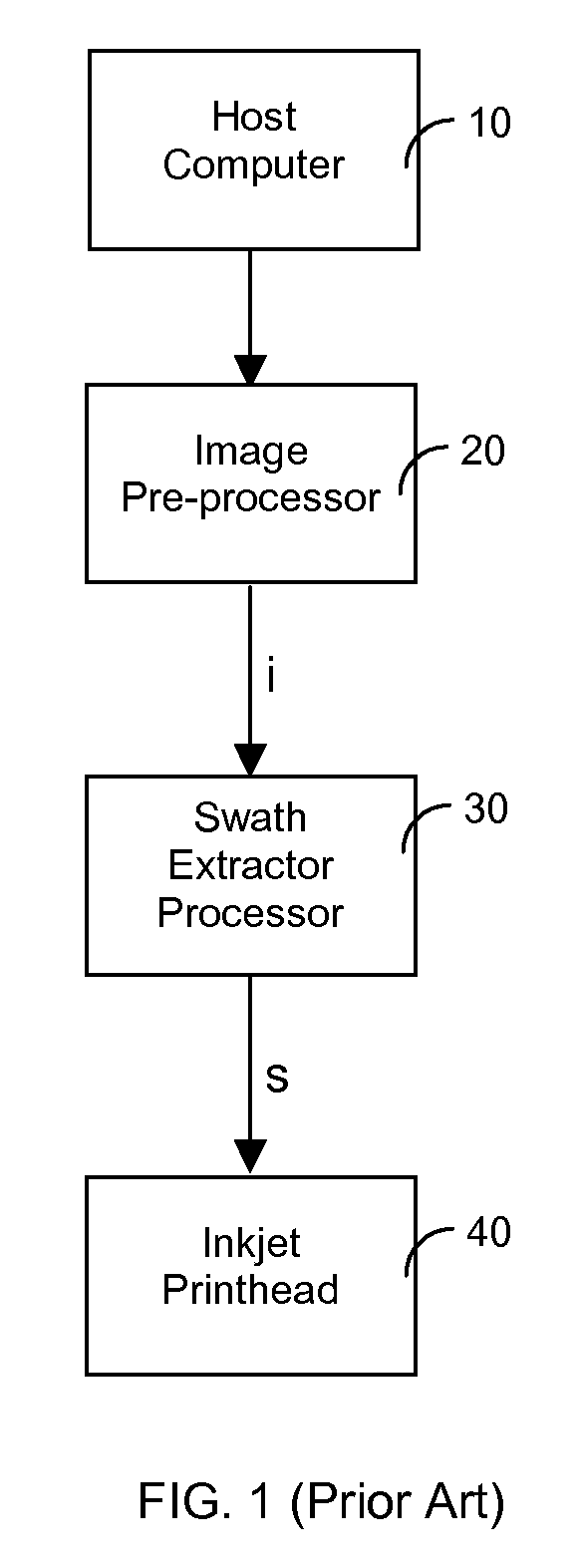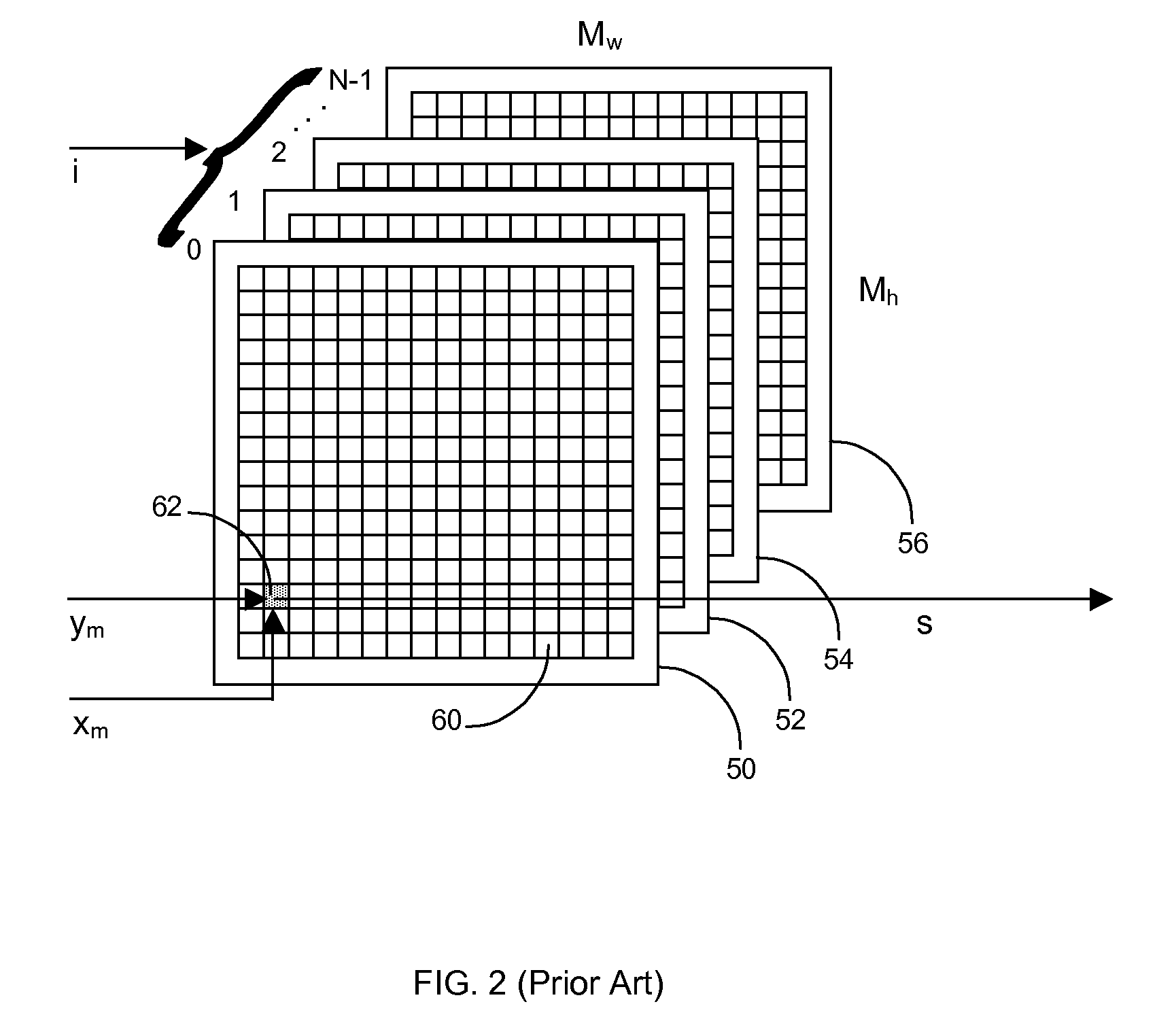Bi-directional print masking
a printing masking and bi-directional technology, applied in the field of inkjet printing systems, can solve the problems of significant differences in the characteristics prone to banding artifacts, and undesirable grainy or noisy appearance of the reproduced image, so as to and reduce the bi-directional banding artifa
- Summary
- Abstract
- Description
- Claims
- Application Information
AI Technical Summary
Benefits of technology
Problems solved by technology
Method used
Image
Examples
Embodiment Construction
[0041]The present invention represents a method to reduce bi-directional banding artifacts typically associated with bi-directional multi-pass printing on an inkjet printer by way of a novel method for defining different print masks for leftward and rightward printing passes. The leftward and rightward print masks are defined such that the order of ink laydown and the timing between ink laydown on different passes are substantially constant for a given horizontal position within the image, independent of the vertical position within the image.
[0042]Turning now to FIG. 6, the method of the present invention will be described. A page 119 is printed on an inkjet printer using a bi-directional multi-pass print mode by moving a printhead horizontally across the page in a first direction (e.g. rightward), firing ink drops from nozzles on the printhead as it passes over a receiver media such as paper. The paper is then advanced by some distance less than the height of the printhead, and th...
PUM
 Login to View More
Login to View More Abstract
Description
Claims
Application Information
 Login to View More
Login to View More - R&D
- Intellectual Property
- Life Sciences
- Materials
- Tech Scout
- Unparalleled Data Quality
- Higher Quality Content
- 60% Fewer Hallucinations
Browse by: Latest US Patents, China's latest patents, Technical Efficacy Thesaurus, Application Domain, Technology Topic, Popular Technical Reports.
© 2025 PatSnap. All rights reserved.Legal|Privacy policy|Modern Slavery Act Transparency Statement|Sitemap|About US| Contact US: help@patsnap.com



